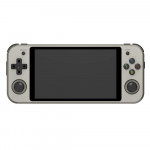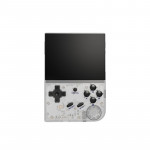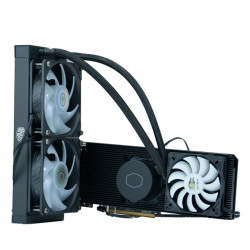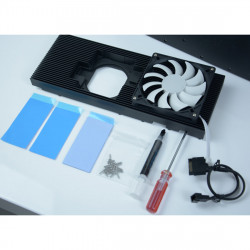Desktop Setup
Crafting an ergonomic and productive desk setup is pivotal for enhancing your efficiency and comfort during long work hours. Here's a comprehensive overview of the crucial elements to optimize your workspace.
Optimal Lighting: Ensuring adequate exposure to daylight or utilizing a desk lamp that mimics natural light can significantly boost your mood and concentration levels. Natural light helps maintain your body's circadian rhythms, vital for your sleep patterns and overall energy levels, while also promoting the release of serotonin in your brain, aiding in focus and a calm demeanor.
Incorporating Plants: Introducing indoor plants into your workspace can combat fatigue, especially during tasks requiring high attention levels. A peace lily is an excellent choice for those less inclined toward regular plant care. It's low maintenance and signals when it needs water. However, if you share your space with pets or children, opt for non-toxic alternatives like cacti or aloe plants due to the peace lily's mild toxicity if ingested.
Ideal Temperature Setting: Finding the perfect Temperature for your workspace can be challenging due to individual preferences and biological differences. Studies suggest an ambient temperature range between 71.6 to 75.2°F (22 to 24°C) might be the sweet spot for enhancing productivity. However, it's recommended to experiment with your office temperature to discover what works best for you, keeping a sweater or small fan at hand for adjustments.
Managing Noise: Consider investing in noise-canceling headphones to minimize distractions in noisy environments. Pairing these with lo-fi beats or ambient sounds can help drown out disruptive noises, creating a more focused work environment.
Ergonomic Seating: An ergonomic chair that supports the lumbar region, allowing you to maintain a posture with your knees at or slightly below hip level and feet flat on the ground, is essential for long-term comfort and spine health.
Proper Desk Height: Your desk should be at a height that keeps your arms parallel to the floor while typing, preventing strain on your shoulders and wrists.
Monitor Placement: Position your monitor about an arm's length away, with the top of the screen at or below eye level, to avoid neck strain and ensure comfortable viewing.
Expanding on Workspace Environment:
Lighting Considerations: Beyond exposure to natural light, it's crucial to position light sources to avoid glare on your monitor and ensure uniform lighting, preventing eye strain and enhancing visual comfort.
Plants for Productivity: Peace lilies or other low-maintenance plants can enhance your workspace's aesthetic and air quality, offering a sense of achievement with minimal care required.
Temperature for Performance: While the optimal Temperature can vary, maintaining a comfortable range can significantly impact productivity and creative thinking. Adjusting your workspace's Temperature or dressing accordingly can aid in achieving the perfect work environment.
Sound Strategy: The right sounds can enhance your work experience. Noise-canceling headphones paired with your choice of music or ambient sounds can isolate you from distracting noises, improving concentration and productivity.
By thoughtfully incorporating these elements into your desk setup, you can create a workspace that promotes productivity and supports your well-being, making each workday more enjoyable and efficient.
Creating an ergonomic desk setup is a cornerstone in ensuring a healthy and productive workspace. This setup helps avoid discomforts such as repetitive strain injury (RSI), back pain, and fatigue and promotes a more efficient work environment. Here's a guide to ergonomically positioning your desk, chair, monitor, and keyboard.
Ergonomic Chair Selection
Spending extensive hours at your desk necessitates an ergonomic chair, which is as pivotal as choosing the right mattress due to the myriad options available. The term "ergonomic" is frequently used, but here's what truly matters in an ergonomic office chair:
- Lumbar Support: A crucial feature, the chair's back should have a curve that compliments the natural curvature of your lower back, providing support and promoting an upright posture.
- Seat Depth: Ensure that when sitting back against the chair, there's a gap of about three to four fingers' width between the back of your knees and the seat edge, allowing for proper circulation.
- Chair Height: The height adjustment should allow your feet to rest flat on the floor, with your knees at an equal or slightly lower level than your hips to minimize pressure on your lower back.
- Armrests should facilitate a relaxed shoulder position with your elbows by your sides, creating a 90-degree angle at the elbow.
- Recline-ability: While opinions vary on the best reclining angle, adjusting your chair to a 100- to 110-degree angle can offer a comfortable posture for those who prefer a slightly reclined seating position.
It's advisable to test chairs for at least 30 minutes in a setting that simulates your usual work environment, ensuring they meet your needs before purchasing.
Desk Setup for Ergonomics
An ergonomic desk setup complements your chair, ensuring that your work environment supports a healthy posture and minimizes strain. Here's how to achieve it:
- Desk Height: Your desk should be at a height where, with your arms at your side and elbows at a 90-degree angle, your hands comfortably rest on the keyboard without straining your shoulders or wrists.
- Monitor Placement: Position your monitor about an arm's length away, with the top of the screen at or below eye level, to prevent neck strain from looking too far up or down.
- Keyboard and Mouse Placement: These should be placed in a way that allows your arms to stay close to your body with your wrists in a neutral, not bent, position while typing or using the mouse.
Incorporating these ergonomic principles into your desk setup will enhance your comfort and well-being and boost your productivity by fostering a workspace that supports efficient and healthy work habits.
Adjusting your desk height is crucial for maintaining a healthy posture and avoiding the adverse effects of prolonged sitting. If your desk allows for height adjustments, alternating between sitting and standing throughout the day can significantly improve your productivity and well-being. For those primarily sitting, ensure the desk height aligns with your forearm level to maintain them parallel to the ground when typing.
Adjusting for Optimal Desk Height:
- If unable to adjust the desk height for an ideal seating position, consider alternative solutions such as a keyboard tray or desk risers.
- Utilize tools like the Ergotron desk height calculator to find the perfect desk height tailored to your physical dimensions and seating preferences.
Monitor Placement Guidelines:
- Position your monitor 20 to 40 inches away to avoid straining or leaning forward, ensuring back support and appropriate eye focus.
- Align the top of the monitor at or slightly below eye level to prevent neck and back strain.
- Limit monitor tilt to 10 to 20 degrees to avoid readability issues.
- To minimize glare, place your monitor perpendicular to windows and follow the 20-20-20 rule for eye breaks.
Wrist Support Adjustments:
- Keep the keyboard close enough to maintain elbows at a 90-degree angle, reducing shoulder fatigue.
- Ensure the forearm is parallel to the floor, with wrists flat or slightly downward.
- Avoid keyboards with a numeric keypad on the side to keep the mouse closer and reduce arm stretching.
- Consider ergonomic solutions like a downward-angled keyboard stand, tray, and wrist rest to prevent bending.
Ergonomic Keyboard and Mouse Recommendations:
- For laptop users, an external keyboard can help achieve an ergonomic setup.
- After extensive testing, Ergonomic keyboards can offer superior comfort and posture benefits.
- Choose a mouse that fits your hand size to prevent awkward wrist bending, exploring wireless and ergonomic mouse options for various needs.
Practicing Proper Posture:
- Regularly assess and correct your posture to avoid slumping forward; engage your core and roll your shoulders back.
- Adjust your position to keep your knees slightly below hip level for comfort.
- Consider innovative solutions like a treadmill desk for movement while working.
By meticulously adjusting your desk, chair, monitor, keyboard, and mouse, you can create an ergonomic workspace conducive to health, comfort, and productivity. Regularly reassess your setup and adjust to maintain optimal posture and ergonomics throughout your workday.











